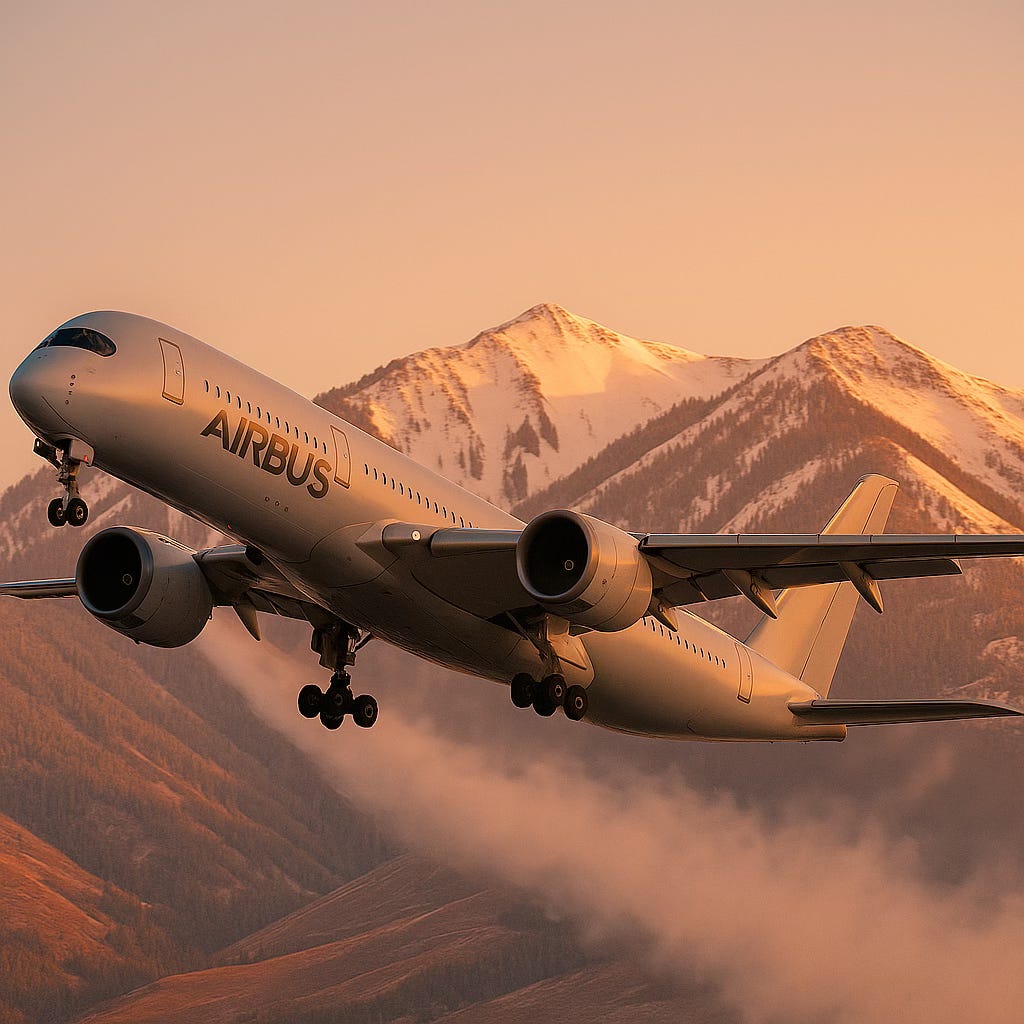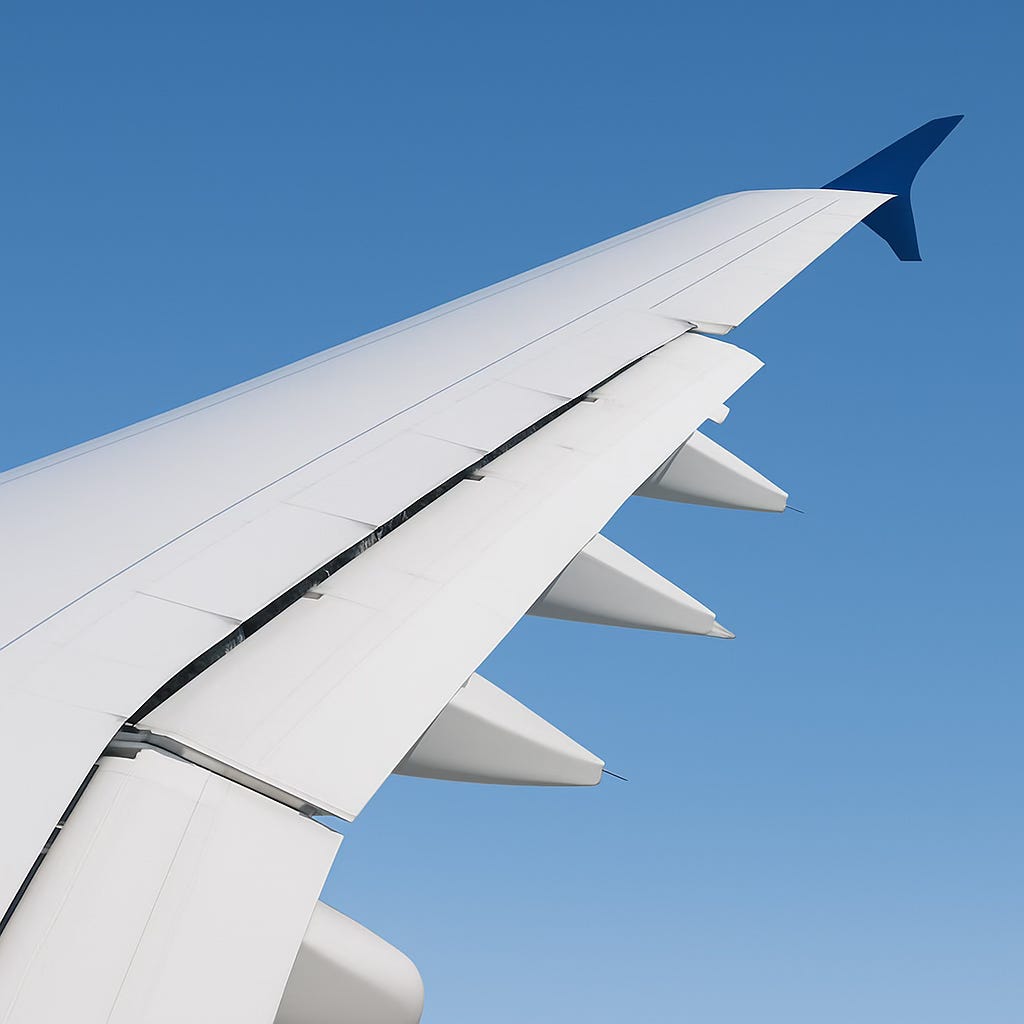🛫 From Seat 2A and 2C – This Week's Pilot Answers to Real Passenger Questions
This week questions from our First Class anxious flyers asking about the "what if"...
Welcome back! Each week, I answer real questions from nervous flyers because the more you understand about flying, the less there is to fear. Whether it's a weird sound, a sudden turn, or a light that came on mid-flight, I'm here to explain it calmly and clearly.
👇 This Week's Questions:
💬 Question #1: "What happens if an engine fails at the most critical time during takeoff?"
✈️ This is probably the #2 fear I hear about, so let's tackle it head-on. First, modern commercial aircraft are specifically designed to fly safely on one engine, it's not just possible, it's a certification requirement.
The "most critical time" you're thinking of is called V1 — the decision speed. Before V1, we have enough runway to stop safely. After V1, we have enough speed and runway remaining to continue the takeoff on one engine. Here's what actually happens:
The plane doesn't fall out of the sky, it climbs more slowly, but it climbs
We follow a precise emergency procedure drilled hundreds of times in training
We declare an emergency with air traffic control and get priority handling
We typically return to the departure airport or continue to the nearest suitable airport
We even have special charts and predetermined escape routes for engine failures at every airport including mountainous terrain. Before every single takeoff, we calculate the exact performance needed to clear all obstacles on one engine, and we follow defined departure routes specifically designed for this scenario.
Every 6 months in the simulator, we practice this exact scenario multiple times. The aircraft will feel different, you might notice a slight yaw or banking tendency but we're trained to handle it smoothly. Engine failures during takeoff are rare, but when they happen, they're manageable emergencies, not catastrophes.
💬 Question #2: "What if the landing gear doesn't extend?"
✈️ Gear malfunctions are extremely rare, but pilots train for this scenario regularly. Modern aircraft have multiple backup systems specifically for this situation.
Here's what we do if the landing gear won't extend normally:
Try the manual extension system, every plane has a backup way to lower the gear using gravity or manual cranks
Perform troubleshooting checklists, sometimes it's just a sensor issue, and the gear is actually down
Get a visual confirmation, air traffic control can arrange for another aircraft or ground observer to visually check if our gear is extended, although it’s difficult to know if it’s locked.
Prepare for an emergency landing, which might mean landing on the main gear only, or in extreme cases, a belly landing
Even belly landings are survivable. The plane is designed for it, we dump fuel to reduce weight, approach at a shallow angle, and emergency crews foam the runway. You'd be surprised how smoothly a large aircraft can slide down a runway.
The key point: this scenario has multiple backup plans, and crews train for it extensively.
💬 Question #3: "What are those wing flaps doing?"
✈️ Think of flaps as the airplane's "training wheels" they help us fly slower and more safely during takeoff and landing.
Here's what's happening when you see those big panels moving on the wings:
During Takeoff:
Flaps extend partially to create more lift at slower speeds
This lets us get airborne with less runway
You'll hear motors or hydraulics moving them, totally normal
During Landing:
Flaps extend fully to create maximum lift and drag
This allows us to approach slower and steeper
The plane can literally fly at much slower speeds than without flaps
Why the noise? Those motors and hydraulic pumps are working hard to move heavy wing panels against significant air pressure. The sounds you hear — whirring, clunking, or grinding — are just the systems doing their job.
You might also notice:
Different flap settings during taxi, depending on our performance calculations.
Flaps retracting in stages after takeoff, we don't need as much lift once we're climbing
Speed changes when flaps deploy, the plane will slow down noticeably, which is exactly what we want
Flaps are like having a sports car that can also drive slowly through a school zone, they give us the flexibility to operate safely at different speeds. Can we land without Flaps? Yes of course. But we will have to approach at a higher speed.
💬 Question #4: "Why does the plane suddenly drop or feel like it's falling during turbulence?"
✈️ This is hands-down the #1 fear I hear about, so let's demystify what's really happening. That "dropping" sensation during turbulence feels absolutely terrifying, but here's the reality: the plane isn't actually falling out of the sky.
What you're experiencing is called an "air pocket" or more accurately, a downdraft. Think of it like this:
Imagine driving over a small pothole, your car dips down briefly, then continues normally
Air has invisible "bumps" just like a road different air masses moving at different speeds
The plane hits these bumps and bounces but it's still flying normally the entire time
Here's what's actually happening during that "drop":
The plane might descend 10-20 feet in a second or two
Your body keeps moving upward while the plane moves down
This creates that stomach-dropping sensation like the top of a roller coaster
The plane immediately recovers and continues flying normally
The key facts that should reassure you:
Modern aircraft are stress-tested to handle forces far beyond any turbulence wings can literally bend into a U-shape before breaking
We get weather reports and "ride reports" from other planes, we know what's coming and plan for it
Turbulence has never caused a modern commercial aircraft to break apart, it's uncomfortable, not dangerous
The plane is designed for this, just like your car is designed to handle bumpy roads
You might also notice:
Flight attendants pause service, not because it's dangerous, but to prevent spilled coffee and injuries from loose objects
The seatbelt sign comes on again, to prevent passenger injuries, not because the plane is in danger
We sometimes change altitude looking for smoother air, just like changing lanes to avoid road construction
Bottom line: That "falling" feeling is your inner ear playing tricks on you. The plane is doing exactly what it's designed to do flying safely through bumpy air.
🛬 Final Thought:
The scenarios that worry passengers most are exactly the ones we prepare for most thoroughly. Every "what if" you can think of has been thought of, planned for, and practiced by your flight crew. Commercial aviation's incredible safety record isn't an accident, it's the result of designing for redundancy and training for every possible situation.
Got a question for next week's edition? Hit reply or drop it in the comments.
—Pilot Nick ✈️ Lessons from the Flight Deck










